#modernisme català
Explore tagged Tumblr posts
Text



Banderes de Catalunya i creus de Sant Pau a l'Hospital de la Santa Creu i Sant Pau, Barcelona, Principat de Catalunya, Catalunya.
#art#modernisme#art modernista#modernisme català#art català#enrajolat#mosaic#Lluís Domènech i Montaner#Hospital de Sant Pau#Barcelona#Principat de Catalunya#Catalunya#Senyal reial#Hospital de la Santa Creu i Sant Pau#arquitectura
6 notes
·
View notes
Text
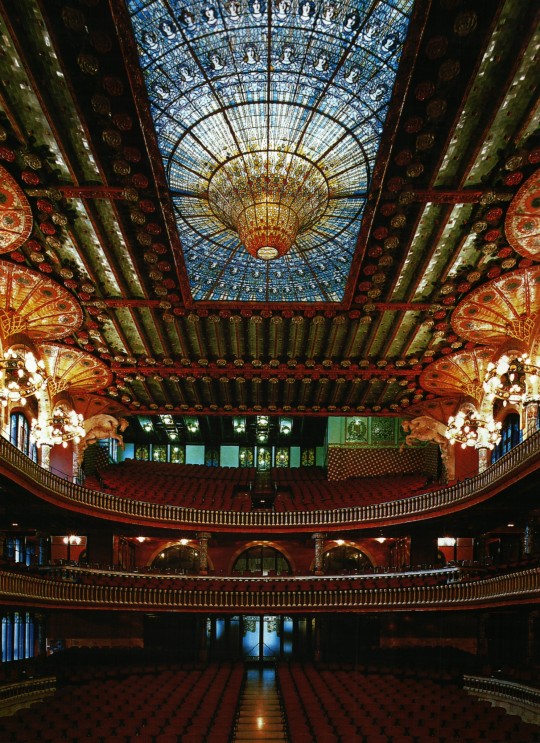


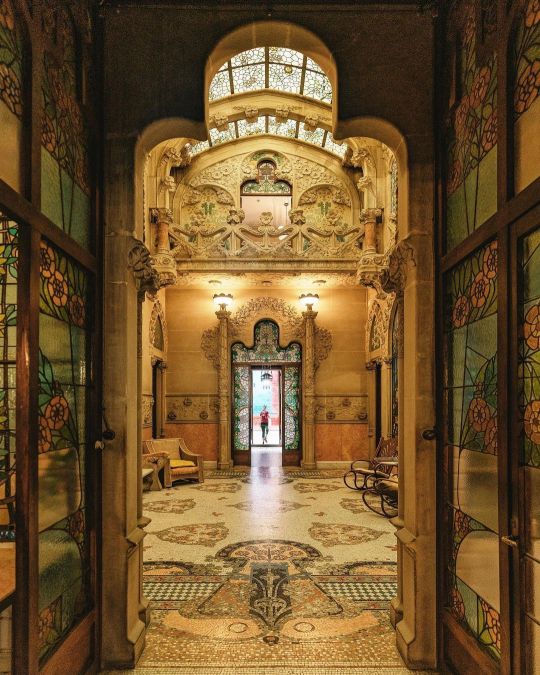
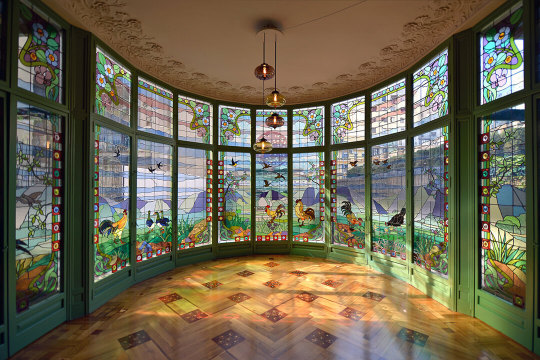
Sources:
- Palau de la Ópera Catalana: tumblr.com
- Institut Psiquiàtric Pere Mata: tumblr.com
- Hospital de Sant Pau: tumblr.com
- Casa Navàs: tumblr.com
- Casa Lleó Morera: tumblr.com
0 notes
Photo
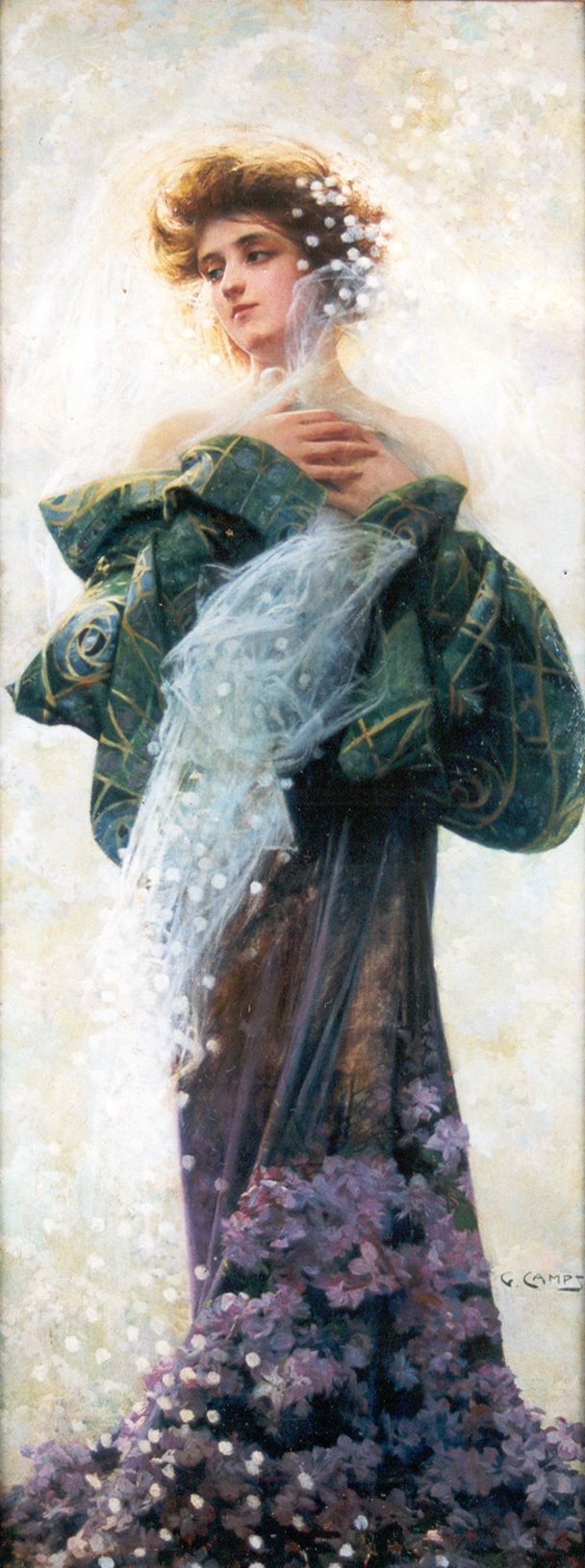


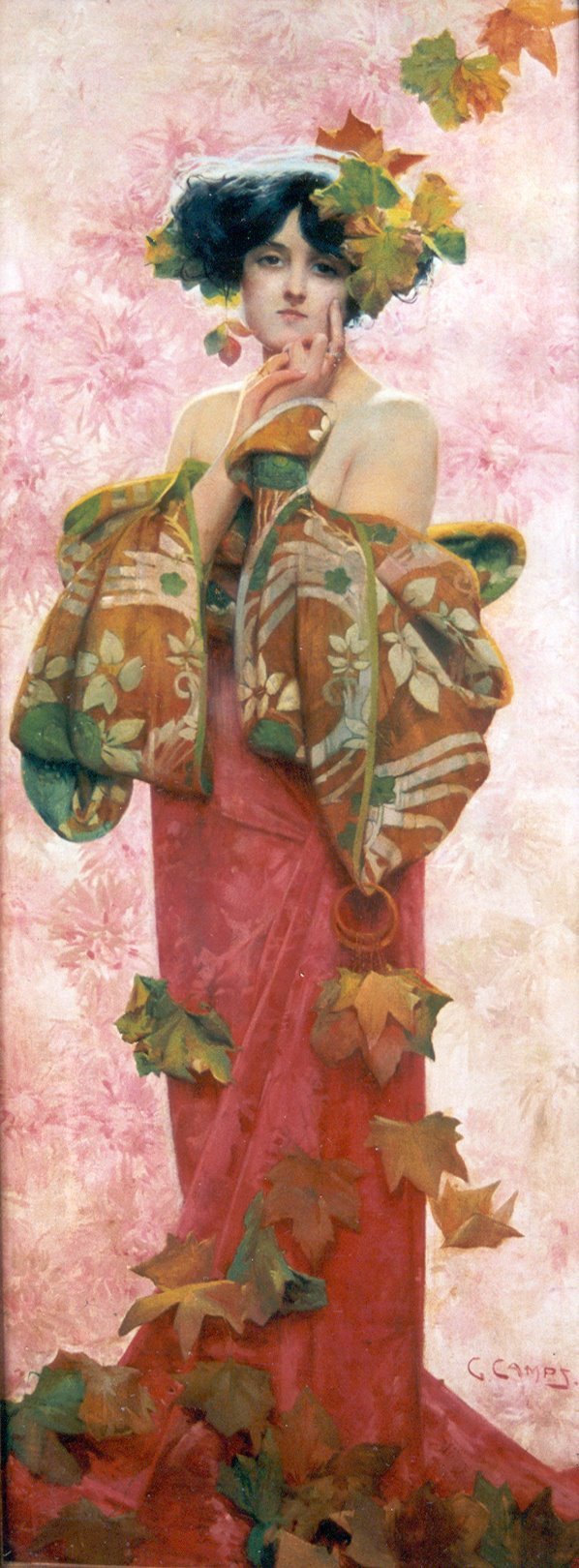
Winter, Spring, Summer and Autumn by the Catalan artist Gaspar Camps (1874-1942).
Museu del Modernisme Català.
#gaspar camps#pintura#arts#modernisme#art#art nouveau#painting#oil on canvas#fine arts#19th century art#20th century art#1900s#traditional art#seasons#winter#spring#summer#autumn#fall#aesthetic
52 notes
·
View notes
Text
Manuel de Pedrolo
Per començar, Manuel de Pedrolo va ser un escriptor i poeta català nascut a l'Aranyó el 1918 i mort a Barcelona el 1990. Pedrolo va ser un autor que va escriure obres en diversos gèneres com la novel·la, el teatre, la poesia i el conte.
Els trets més rellevants de Pedrolo eren la seva gran capacitat d'escriptura, la seva creativitat, la seva originalitat i la seva dedicació a la literatura. Va ser un escriptor compromès amb la seva època i les seves idees, i va reflectir això en la seva obra.
Quant als seus assoliments literaris, Pedrolo va ser guardonat amb nombrosos premis i reconeixements durant la seva carrera. Va rebre el Premi d'Honor de les Lletres Catalanes el 1984, i va ser guardonat amb el Premi Nacional de la Crítica per la seva novel·la "Mecanoscrit del segon origen" el 1974.
La seva obra més coneguda és "Mecanoscrit del segon origen", una novel·la de ciència-ficció que va ser un èxit de vendes i ha estat traduïda a molts idiomes. Altres obres destacables de Pedrolo són "El gos de Llucifer", "Els camins dels ocells" i "L'escarabat blau", entre altres.
Quant a l'estil de Pedrolo, es pot considerar dins el moviment del realisme social, però també amb influències del modernisme i l'existencialisme. La seva escriptura es caracteritza per la seva originalitat i la seva habilitat per reflectir la complexitat dels personatges i les seves circumstàncies.
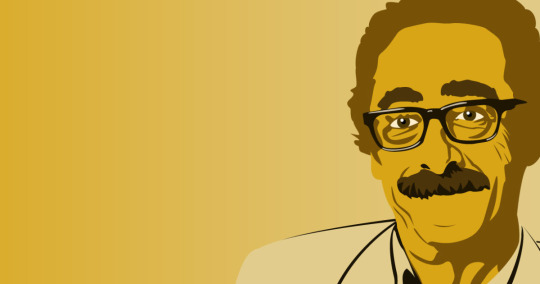
2 notes
·
View notes
Text
Lluís Domènech i Montaner: un dels grans oblidats
Domènech i Montaner és considerat per molts el pare del Modernisme a Catalunya i un dels màxims exponents del catalanisme polític. És l’autor d’obres com l’Hospital de Sant Pau o el Palau de la Música, a Barcelona. Enguany es compleix el centenari de la seua mort. Lluís Domènech i Montaner Escrit per Aina Rabassa Enguany se celebra el centenari de la mort de l’arquitecte català Lluís Domènech i…

View On WordPress
0 notes
Video
Barcelona, Spain
#Barcelona#Tibidao#Catalunya#Cataluña#Katalanien#España#Spanien#Antoni#Gaudi#Modernisme#Català#Jugendstil#Casa#Batlló#spain
71 notes
·
View notes
Text

3 notes
·
View notes
Text

The Palau de la Música Catalana is considered chief among Domènech i Montaner’s masterpieces. Photograph: Stefano Politi Markovina/Alamy
Barcelona’s ‘Other’ Great Architect: Five of His Finest Buildings
Catalonia’s design gems don’t begin and end with Gaudí. The works of Lluís Domènech i Montaner deserve a closer look on the centenary of his death
— Stephen Burgen | Wednesday 8 February 2023
Barcelona is justly renowned for its architecture but there’s a lot more to it than Gaudí and the still unfinished Sagrada Familia. This year Catalonia is celebrating the centenary of the death of Lluís Domènech i Montaner (1849-1923), one of Gaudí’s contemporaries and a leading light in the Catalan modernisme movement,
Over the course of the year there will be talks, videos and conferences celebrating the work of this prolific architect, as well as a route taking in some of his 26 buildings, 11 of which are in Barcelona. Domènech, who was prominent in the Catalan cultural revival known as the renaixença, combined modern techniques such as steel-framing with nostalgic and often romantic concepts of Spanish and Catalan culture. Ornamental ironwork, ceramics and stained glass characterise his lavishly decorated buildings.
Here’s are five of the architect’s most emblematic buildings.
Castell dels Tres Dragons, Barcelona

Castell dels Tres Dragons incorporates medieval influences. Photograph: Alamy
Standing in the north-west corner of the Parc de la Ciutadella, the Castell dels Tres Dragons was built in 1888 as a cafe and restaurant for the Universal Exposition. Although an early work, Domènech had already developed his distinctive style of exposed brickwork and iron structures. There are medieval references as well as a nod to the Spanish-Arab mudejar style, with heraldic motifs and images of plants and animals. The capitals and columns in the cafe are based on the 12th-century synagogue in Toledo. The Castell had a later life as the city’s natural history museum but that has now moved and the building is being restored.
Palau de la Música Catalana, Barcelona

The concert hall’s design has Spanish and Arabic elements. Photograph: Brian Jannsen/Alamy
The steel-framed concert hall built for the Orfeó Català choir in 1908 was funded by public donations and is generally seen as Domènech’s most complete masterpiece. As with the Castell, the facade consists of exposed brick and iron and decorative mosaics with elements of Spanish and Arabic architecture. Inside, the dominant element is stained glass. Even the balusters on the stairway are glass and the concert hall itself is walled with glass so that in summer recitals begin in daylight, giving the sensation of listening to music in a garden. The ceiling supports a gigantic sun-like skylight while the semi-circular stage is lined with carvings of 18 “muses”. The acoustics are surprisingly good, given the amount of glass, and to fully appreciate the Palau, go to a concert. There are classical, jazz and flamenco concerts all year round. Guided tours are also available.
Hospital de Sant Pau, Barcelona

A hospital that’s an ‘exuberant celebration of ceramics, glass and ornamentation’. Photograph: Alamy
Work on what is Europe’s largest art nouveau building began in 1901 but wasn’t completed until 1930, after the architect’s death. Facing the sea so that patients might benefit from breezes off the Mediterranean, the building incorporates what were then modern ideas about healthcare and hygiene, with ample ventilation and open spaces. It comprises a series of interconnected buildings, each catering to different medical conditions. The curved, tiled surfaces of the operating theatres, with no crevices where dirt can gather, reflect the growing awareness of the need for a sterile environment. The main administration building is an exuberant celebration of ceramics, glass and ornamentation, unlike any hospital designed before or since. Sant Pau continued to serve as one of the city’s principal hospitals until 2009. Along with the Palau de la Música Catalana, it was declared a Unesco heritage site in 1997.
Casa Navàs and Pere Mata, Reus

The Institut Pere Mata is a psychiatric hospital in Reus. Photograph: Cavan Images/Alamy
Reus, one hour and 20 minutes south of Barcelona by train, is now a bit of backwater but was once a wealthy textile town. The house was commissioned by Joaquim Navàs Padró, a textile merchant, and Domènech began work on it in 1901 in conjunction with the interior designer Gaspar Homar. Between them, they created an intricately decorated house rich in detail and where once again stained glass and ceramics are the protagonists. Despite being damaged during the Spanish civil war, it contains all the original furniture. While in Reus you might visit Domènech’s other buildings there, notably the Pere Mata psychiatric hospital.
Casa Museu Domènech, Canet de Mar

Domènech designed some of his best known buildings in his Canet de Mar studio. Photograph: Campillo Rafael/Alamy
Domènech built this house to accommodate his large family and he designed some of his most famous work in the building’s studio. Since 1998 it’s been a museum where, as well as touring the building, there are displays illustrating his work not just as an architect but as a writer. Domènech also built the town’s Ateneu (cultural centre), which is similar in design to the Castell dels Tres Dragons. The museum organises a tour of his and the work of other modernista architects in the town, which is an hour’s train journey north of Barcelona.
2 notes
·
View notes
Link
Throughout history, political and economic developments of a particular time have had a significant influence on the growth of art, culture and social lives of civilians and, more importantly, the artists belonging to the regions in focus. These developments have given birth to a series of art movements with specific ideologies that typically lasted for a matter of a few decades, characteristic of the time they originated in and the place.
#art deco architecture#art nouveau interior design#famous art nouveau architecture#art nouveau movement#art nouveau architecture slideshare#art nouveau architecture paris#art nouveau examples
2 notes
·
View notes
Photo

Les 4 saisons : Automne. Huile sur toile, vers 1907, par Gaspar Camps i Junyent. Museu del Modernisme Català.
480 notes
·
View notes
Text

Xemeneies de la Casa Milà, "la Pedrera", d'Antoni Gaudí. Barcelona, Principat de Catalunya.
#art#escultura#modernisme#art català#gaudinisme#Antoni Gaudí#Casa Milà#La Pedrera#casc#cavaller#enigmàtic#Barcelona
4 notes
·
View notes
Photo

Barcelona by lamanga
1 note
·
View note
Note
Do you know of any books that were written as a part of the modernisme movement? Have any of them been translated? Thank you for your time and dedication to informing us on Catalan culture, it is truly beautiful 🧡🧡
Hello! Yes, there is some very interesting Modernist literature.
First of all, I want to introduce two websites for Catalan literature in other languages.
First, lletrA. This is a project by the UOC university in Catalonia where you can browse authors of Catalan literature and read about them in English, Spanish or Catalan. It also includes links to compilations of poems by the author or fragments in the case of novels, but these aren’t always translated.
Secondly, visat.cat. It’s the page of a digital magazine about translation in and from Catalan. In this page, you can look for any Catalan author and find if their books have been translated to other languages. You can also find poems and fragments of novels translated in this website.
Now, to Modernist literature.
-
Poetry
For poetry, the most famous is the work of Joan Maragall (1860-1911). You can read about him in this PDF by the Anglo-Catalan Society or on lletrA’s page for him.
According to visat.cat, two books by Maragall have been published in English: Count Arnau & other poems of Joan Maragall (translation by Michael Odom, Maostrap Books, 2017) and One Day of Life is Life Joan Maragall (translation by Ronald Puppo, London/Barcelona: Fum d'Estampa Press, 2020).
-
Novels
When it comes to novels, the most famous author is Víctor Català (a male pseudonym for Caterina Albert, she had to publish under a male name since her books were considered too gruesome to be written by a woman). Her work often describes harsh realities, similar to the Realism and Naturalism literary movements. You can read about her in visat.cat.
Her most famous book is Solitude (“Solitud”), published in 1904-1905, a highly symbolic novel about the self-discovery of a woman named Mila. This is the summary:
"Solitude" tells the story of Mila, a peasant girl who makes the mistake of marrying an ineffectual if guileless fellow called Matias and going to live with him in a hermitage high in the mountains. Mila at first finds the dramatic vistas overwhelming. Gradually, however, she adjusts to the unfamiliar and frightening landscape as well as to the harsh, wintry life of the ancient complex where she and Matias serve as caretakers. But each falls under the spell of a different local and a different way of life. The twin seductions of husband and wife lead to inevitable and dire consequences.
Solitude was published in English in 1992, translation by David H. Rosenthal (Columbia, Readers International).
The other most famous text by Víctor Català / Caterina Albert is The Child Killer (“La infanticida”), a theatre monologue written in 1898 and which made her first become a renowned author. It follows the thoughts of a woman who has been sent to a mental asylum after having killed her son.
If you’re interested in the experiences of women in a highly male-controlled society, morality, and even the topic of abortion, as well as love and “women’s madness”, you might like The Child Killer. I have to mention, though, that it has some very violent sections. Sadly, it seems like it hasn’t been translated to English, but I still wanted to mention it because of its relevance.
And this leads to my favourite...
-
Theatre
Here we have Santiago Rusiñol! He was also a painter (you can find some of his paintings in this blog’s #santiago rusiñol tag) but he wrote great comedies. It doesn’t seem like his work has been translated to English, and to be honest it would be quite difficult because his plays are constant puns and references. But I still want to mention him in case he gets translated in the future.
One of his most famous works is the 1902 play Els jocs florals de Canprosa, which more or less translates to “The Floral Games of Prose-house” (Floral Games are a Catalan poetry competition that started in the Middle Ages and was done again by the Renaixença -the literary movement before Modernism- which is similar to Romanticism). In this play, Rusiñol makes fun of the Renaixença movement and the ways that the previous generation had fought for the same ideas of preserving and renovating Catalan language and literature.
Another one is L’hèroe (“The Hero”), about a pretentious soldier who comes back from fighting in the Spanish army in the Cuban War of Independence. It’s an anti-militarist play that was very brave for making fun of the Spanish defeat only a few years after it happened: Cuba won the war and became independent in , and the theatre play premiered in 1903.
Another of my favourites is El bon policia (“The Good Policeman”), an ironic title. This is a less famous play from 1905, considered one of his minor ones, but it’s very funny and I loved it so I’m including it. It’s about a poor man who has no other option than to become a policeman (for the desperation of him, his husband, and everyone), but he’s too good for such a job and gets into funny situations with the people he is sent to arrest and with with superiors. This play is also manifestly in favour homosexuality, a topic that it treats in a very natural way.
Rusiñol also has love theatre like El pati blau (“The Blue Patio”) and L’alegria que passa (“The happiness that passes by”).
-
That’s the main ones, though of course there were more authors. As always, if anyone who reads this post wants to add more, you are welcome to do so in the reblogs or in the comments!
#literatura#arts#modernisme#joan maragall#víctor català#caterina albert#santiago rusiñol#teatre#ask#anonymous
28 notes
·
View notes
Photo

La visita al Recinte Modernista ens permet descobrir una de les obres més importants de Lluís Domènech i Montaner, arquitecte cabdal del modernisme català, i el resultat d’un dels processos de rehabilitació més destacats dels últims anys. La visita al Recinto Modernista permite descubrir una de las obras más importantes de Lluís Domènech i Montaner, arquitecto capital del modernismo catalán, y el resultado de uno de los procesos de rehabilitación más destacados de los últimos años.
4 notes
·
View notes
Photo

this post is meant to be a directory of every resource I come across for Catalan. it will be a continuous work in progress so thank you for your patience! if you have any issues or things to add, please reply to this post!
info
about world languages
fun facts
getting to know catalonia: an introduction to the catalan language, culture and society [mooc]
glottolog
how to sign up for free catalan courses in catalunya
introduction by @ayearinlanguage
omniglot
orbis latinus
overview of the history of catalan
playlist of samples
the catalan language [video]
wikipedia
world atlas of language structures
alphabet
accents
overview of catalan orthography
apps
flewent [chrome]
courses
bliubliu
book2
curs de catala
parla.cat [mooc]
routledge - colloquial catalan: the complete course for beginners [pdf]
teach yourself (1993) [pdf]
wikibook [in catalan]
cultural & historical info
acultura’s culture tag
/r/catalonia
/r/catalunya
dictionaries
cambridge
catalandictionary [meta search]
diccionari.cat
diccionari invers de la llengua catalana
diccionarios.com
diec2
enciclopèdia.cat
freelang
institvt d’estvdis catalans
lexicool
lexilogos
majstro
openthesaurus-ca
termcat [thematic dictionary]
wiktionary
wordreference
flashcards
cram
forums
quora
/r/catalan
unilang
grammar books & guides
descriptive grammar of the catalan language
overview of catalan grammar
grammar points
adjective number
anar vs. anar-se’n
articles
demonstrative adjectives
indefinite pronouns & adjectives
interrogative pronouns
nouns / overview of nouns
personal pronouns / overview of personal pronouns
plurals
possessive pronouns
quantitative adjectives & adverbs
weak personal pronouns
listening practice
librivox [audiobook library]
lyrikline [poetry library]
literature
children’s songs and rhymes
la illustracio poetica [poetry library]
list of poets
list of writers
logoslibrary [virtual library]
overview of catalan literature
overview of la decadència
overview of modernisme
overview of noucentisime
overview of renaixença
project gutenberg [virtual library]
Quran [scans]
/r/cificat [science fiction forum]
rosary prayers
universal declaration of human rights [pdf]
universitat oberta de catalunya [poetry library]
media
ted talks
movie & tv recommendations
letterboxd
movie recommendations by @elnas-studies
tv show recommendations by @elnas-studies
music recommendations
catalan feminist songs by @useless-catalanfacts
disney songs masterpost
folk music recommendations by @guillemelgat
música en català 2018 [spotify]
music recommendations by @useless-catalanfacts
news
ara.cat
el diari
el món
el pais [catalan version]
el periodico
el puntavui
newspaper map
vila web
phrasebooks & travel guides
at hand - basic communication in the catalan language
bbc quick fix
loecsen [audio]
omniglot
taxi language
wikivoyage
podcasts
one minute catalan
podcast recommendations by @useless-catalanfacts
pronunciation
el sons del català
forvo [pronunciation dictionary]
ipa key
overview of catalan phonology
overview of the phonological history
quizzes & exercises
clozemaster
digital dialects [vocabulary games]
iteslj [vocabulary quizzes]
tongue twisters
radio
catalunya ràdio
rac1
ràdio arrels
ràdio flaixbac
radio in andorra la vella
radio in barcelona
social media
@rodamots [twitter]
catalunya [discord]
catalan-english language exchange [discord]
wikipedia
speaking tips
proverbs
special topics
biblography for catalan studies
short overview of anti-catalanism
timeline of names used for catalan
tumblrs
@learncatalan
@mercigracies
@useless-catalanfacts
verbs
common verbs / 50 common verbs
conjugation chart [pdf]
conjugator - catalandictionary.org
conjugator - logosconjugator
conjugator - verbix
overview of catalan conjugation
overview of catalan verbs
vocabulary
adverbs
agreement
babadada [vocabulary tool]
breakfast
cognates - neapolitan
days of the week
exonyms
fairytales & legends
family
fiber arts
football
frequency lists
fruits
greetings
hanukkah
harry potter
language learning
market
medicine [dictionary]
months
numbers / counting / numbers
prepositions
rodmots [word a day tool]
school
spring
swadesh list
tea & infusions
time adverbs
telling the time
travel
winter solstice
writing tips
spelling and grammar checker - language tool
youtube
learn catalan from barcelona
llengua catalana
tel_caramel
in spanish / en español
catalán [wikibook]
duolingo
120 notes
·
View notes
Text
Top 6 Famous Art Nouveau Artists

Art Nouveau is an art movement that started around 1890 and which as first described by a Belgian art magazine called "L'Art Moderne." They used the term to describe a group of 20 artists called "Les Vingt" (The Twenty). This group consisted of 20 Belgian painters, sculptors, and designers who aimed to reform art in the late-19th century. The main objective of the movement was to make a clear distinction between fine arts, such as painting and sculpture, and applied arts, such as decoration and design, etc. The famous Art Nouveau artists wanted to be differentiated from the Romantic artists, Realism artists, Impressionist artists, and Post-impressionist artists, who defined art earlier in the 19th century. The movement then spread from Belgium and France initially to multiple countries across the world in the 1890s. It's defined by a different term in various languages, including the "Modern Style" in English, "Stile Liberty" in Italian, "Jugendstil" in German, and "Modernisme Català" in Catalan, to name a few. The movement was interrupted by World War I but was already fading before that around 1910. In the 1920s, it was replaced by a new style of decorative art and architecture called "Art-Deco," followed by "Modernism." So who were some of the most famous Art Nouveau artists? In this post you'll find out! Famous Art Nouveau Artists 1. Gustav Klimt Gustav Klimt (1862-1918) was an Austrian painter who was one of the most prominent members of the Vienna Secession movem Read the full article
0 notes